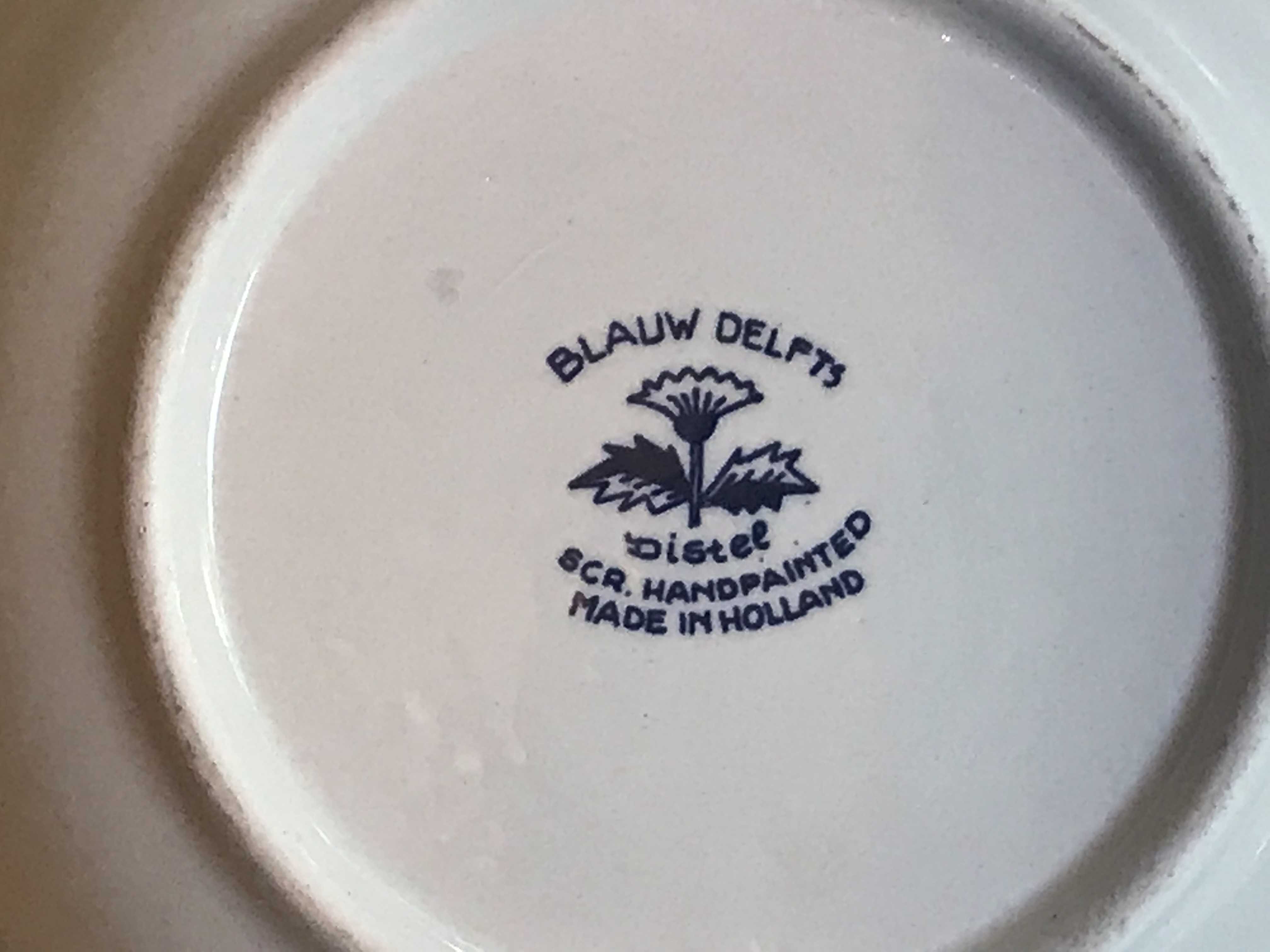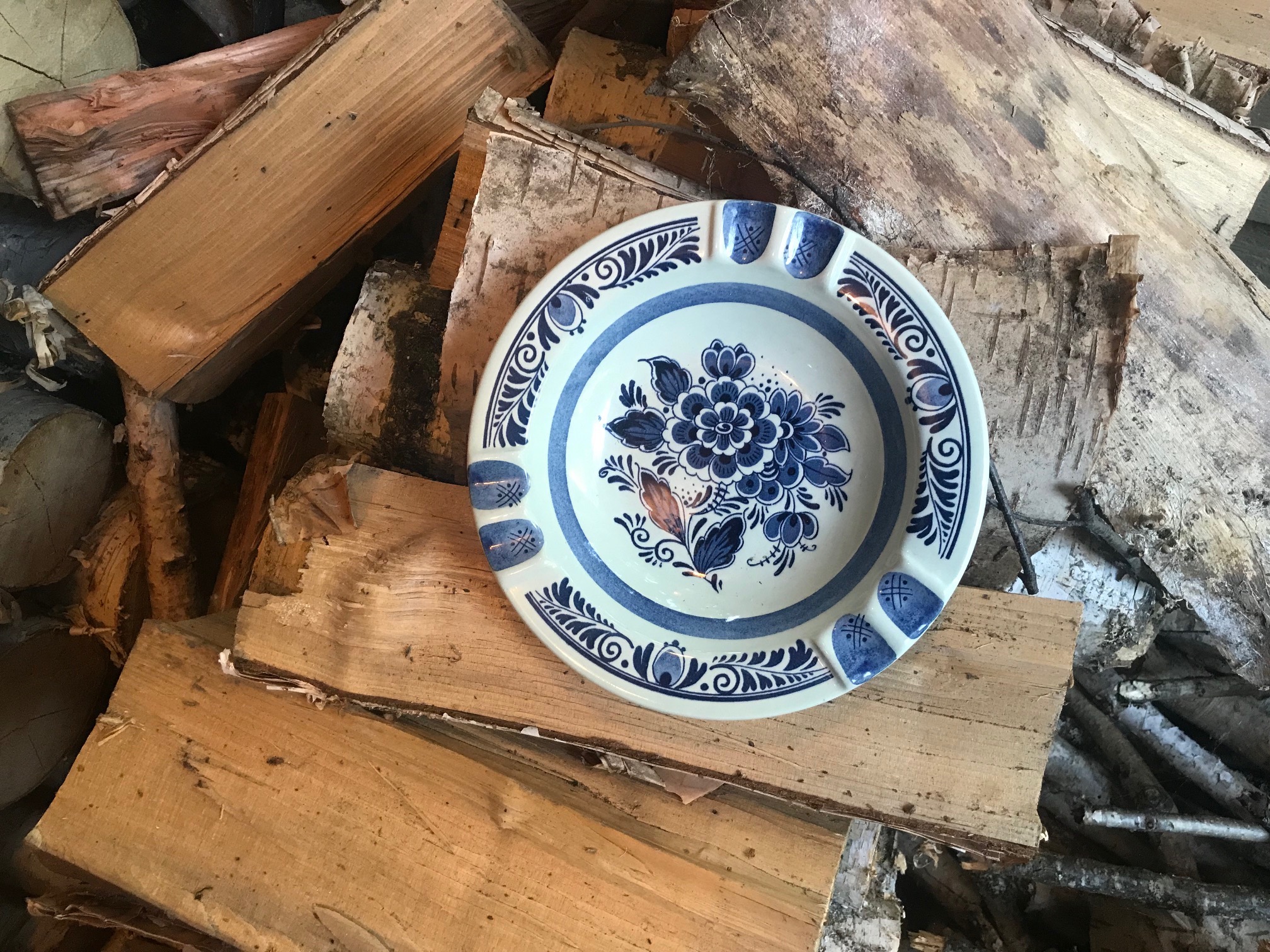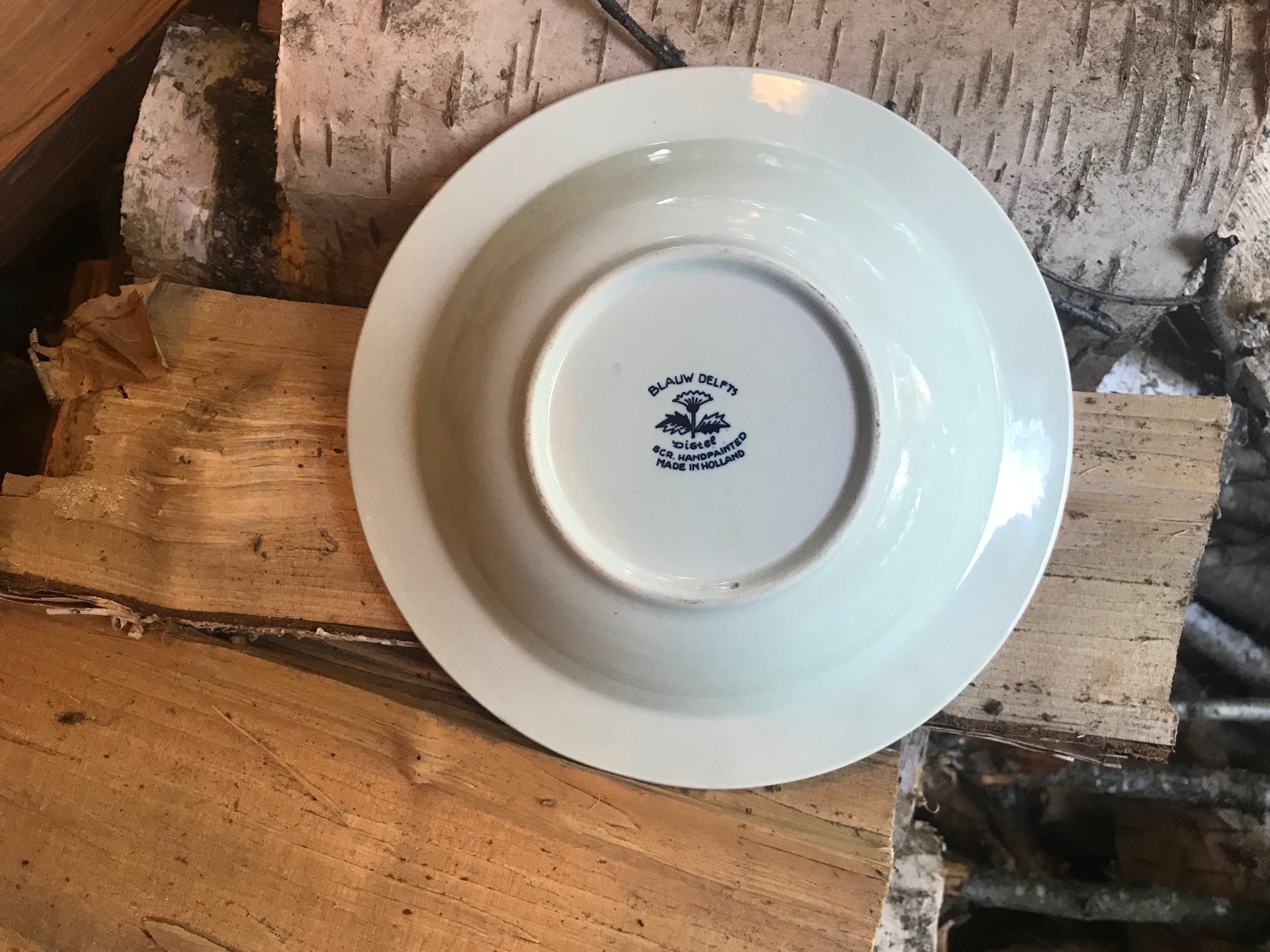Vintage Blauw Delfts Distee “Made in Holland” Hand Painted Ashtray: 46,800 ppm Lead. 90 is unsafe.
When tested with an XRF instrument, this blue and white Blauw Delfts Distee (Made in Holland) hand-painted ashtray had the following readings:
- Lead (Pb): 46,800 +/- 1,100 ppm
- Barium (Ba): 230 +/- 75 ppm
- Antimony (Sb): 90 +/- 27 ppm
- Tin (Sn): 284 +/- 28 ppm
- Zinc (Zn): 325 +/- 42 ppm
- Copper (Cu): 924 +/- 79 ppm
- Iron (Fe): 869 +/-164 ppm
- Vanadium (V): 281 +/- 46 ppm
- Titanium (Ti): 598 +/- 77 ppm
- Cobalt (Co): 4,839 +/- 264 ppm
This item was tested for a minimum of 60 seconds, and tested multiple times to confirm the results. Testing is done with an XRF instrument used in “Consumer Goods” mode. Results are science-based, accurate, and replicable. The XRF used is the same instrument used by the United States Consumer Product Safety commission for testing consumer goods for toxicity.
Why is this much Lead a problem?
For context (so you have a better understanding of what the above numbers may indicate): newly manufactured items intended for use by children are considered unsafe (and illegal) if the glaze, paint or coating is greater than 90 ppm Lead (as detectable with an XRF.) Dishware (modern and vintage) is not regulated in the same way (or with the same strict standards) as toys and other items intended for use by children.
“But it is an *ASHTRAY* – so that’s not a problem, right?”
Given this was intended to serve as an ashtray – which is decidedly neither a dish for food use purposes nor a toy for a child to use – I would;dn’t normally have as much of a concern with an item like this testing positive for such a high level of Lead (especially if it is used only as a decorative piece.) I would, however ,caution the user and suggest that they wash their hands after touching it, as both the possible age (I don’t know the exact age, but assume it is at least vintage if not antique based on the digging around I have done on eBay) and Lead level of this combine to create the concern that it could be chalking into the environment and Lead could be wearing off on to the hands of any person who touches it.
Needless to say, this would NOT be a good choice to “up-cycle” (repurpose for any other household use — especially where a child might handle it.
While this is an ashtray and not a food-use dish, it is a pretty good indicator of what one might expect to find in similar pieces that were food-use pieces from this brand, and now knowing the test results of a piece like this I would caution against using any vintage Blauw Delfts pieces for functional food use purposes.
To see more ash trays I have tested, click here.
To see more “Made in Holland” pieces I have tested, click here.
As always, thank you for reading and for sharing my posts.
Please let me know if you have any questions.
Tamara Rubin
#LeadSafeMama
*Amazon links are affiliate links. If you purchase something after clicking on one of my links I may receive a small percentage (usually 4 to 6%) of what you spend at no extra cost to you.

Never Miss an Important Article Again!
Join our Email List




